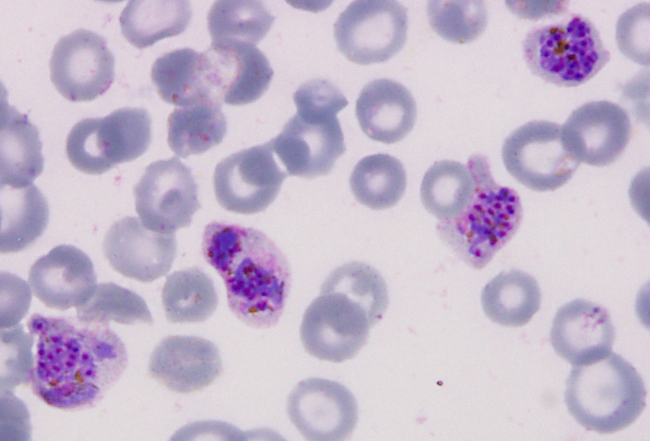Tuesday 16 January 2018 10:50am
Plasmodium vivax (Pv) is the most widely distributed and difficult to cure form of human malaria. New research aims to identify the specific blood cell receptors and corresponding parasite proteins used by this disease.
Dr Bruce Russell (Microbiology and Immunology), has been awarded a Marsden Fund grant to Unravel the molecular basis for vivax malaria's unhealthy attraction to human reticulocytes (immature red blood cells).
Most important cause in Asia-Pacific
Pv is certainly the most important cause of malaria in the Asia-Pacific region. Difficulties in diagnosis, treating the dormant liver stage, and the recent spread of drug-resistant Pv have provided impetus for vaccine development against vivax malaria.
Plasmodium vivax's characteristics
The ability of Pv to cause disease is dependent on the invasion of immature red blood cells (reticulocytes). How Pv identifies and invades reticulocytes remains unknown. We aim to identify the specific blood-cell receptors and corresponding parasite proteins used to invade human reticulocytes.
Dr Bruce Russell says "As part of our research methodology we will be using the flow cytometry facility for the quantification of malaria parasites invading red cells and also determining the quality(health) of the malaria parasite".
Research aims underpin vaccine development
Our research will identify the receptors and parasite proteins by targeting a proteomic shortlist of reticulocyte receptors with neutralizing antibodies/knockdowns in Pv invasion assays. The identification of the reticulocyte-specific receptors and corresponding ligands will aid in the development of vaccines against vivax malaria.

Four human red blood cells infected with mature vivax malaria parasites (the four large cells contain the mature asexual form).

Flow cytometry contacts
For initial advice and consultation:
- Email michelle.wilson@otago.ac.nz (North campus)
- Email katie.young@otago.ac.nz (South campus)
More about flow cytometry services
What is flow cytometry?
Flow cytometry is used to analyse the physical and chemical characteristics of particles or cells carried in a fluid stream as they pass through at least one laser. Fluorescently-labelled cell components are excited by the laser to emit light at varying wavelengths, the emitted light is measured by detectors.